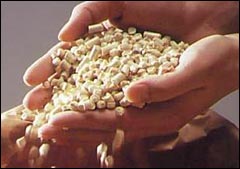Dear Umbra,
I am a policy analyst with Californians Against Waste, a recycling advocacy group. Just wondering why pellet stoves were not considered in your wood stove analysis. I have one and feel that overall they rate well compared to other heating options.
Thanks,
Scott Smithline
Sacramento, Calif.
Dearest Scott,
Omitting pellet stoves from my analysis was just a plain old oversight. Only honesty between us, my friends. Let’s talk about pellet stoves this week to make up for lost time, because they are dandy.

Waste not, shiver not.
Pellet stoves are similar to modern wood stoves in aspect: they are metal boxes with a window showing the toasty fire inside. Reminiscent of a giant welding helmet. But they have three main differences: their toastiness is regulated by an electronic gizmo, they burn pellets instead of logs, and they burn more cleanly and efficiently than most modern wood stoves. Any pellet-stove proponent will point out that the EPA doesn’t even bother to certify pellet stoves, since they burn very little waste ash and release relatively few particulate emissions.
How do they work? A hopper at the back of the stove holds the eponymous pellets and regularly feeds them through a little auger chute into the burn chamber, where a blower blows the perfect amount of air across the pellets, the pellets burn very hot and clean, another blower blows the heat out to the room, and the exhaust vents out a small pipe to the outdoors. The vent doesn’t require a chimney, and the stove is not hot to the touch.
The pellets themselves are small pieces of compressed biomass, usually wood but sometimes crop or paper waste, which are described as looking “like rabbit food.” They come in 40-pound bags, like rabbit food, and are easily, tidily stored until the moment when one tips them into the hopper. One reason these stoves burn so cleanly is because the fuel has low moisture content: 5 to 10 percent, compared to firewood’s 20 percent. Remember we talked about moisture during our wood fuel discussion, and the less the better.
The hopper needs to be filled daily when the stove is used regularly; the stoves generally use one to three tons of pellets a year. You’d have to check with your supplier about the provenance of their pellets, but in theory you could get a clean burn and divert solid waste in one fell swoop. The Royal We previously noted that wood burned from sustainably harvested sources is carbon-neutral, and this would apply to pellets as well.
The stoves do have a few drawbacks, such as requiring regular maintenance and a dependable pellet supplier. Also, as mentioned, they rely on electricity so they may be an ineffective way to take your heating needs off the grid unless you have an off-the-grid power source such as solar, wind, etc. Normal usage will see your stove consuming 100 kilowatt-hours per month.
Pellet stoves are more expensive than traditional wood stoves, but they are easier to install and may be cheaper to operate, depending on your fuel source. But remember, these factors are all in comparison to traditional wood stoves, to which their resemblance is mostly visual. All heat sources have their drawbacks and advantages, and pellet stoves will be perfect for some applications.
Correctively,
Umbra


